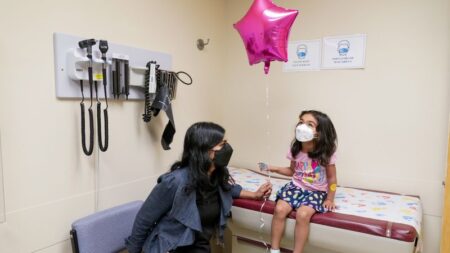New FDA Rule Requires Breast Density Information in Mammogram Reports
In a significant update for breast cancer screening, starting this week all mammography reports and result letters sent to patients in the United States will now be required to include an assessment of breast density, effective Tuesday as mandated by the US Food and Drug Administration (FDA).
Breast density refers to the proportion of fibroglandular tissue compared to fatty tissue in a woman’s breasts, with denser breasts having more of the former. According to radiologist Dr. Kimberly Feigin, interim chief of the Breast Imaging Service and head of Breast Imaging Quality Assurance at Memorial Sloan Kettering Cancer Center, approximately half of women over 40 in the United States have dense breast tissue.
“We talk about breast density for two reasons. One is that breast density can make it more difficult to spot a cancer on a mammogram, because dense breast tissue – the glandular elements and connective tissue supporting elements – looks white on a mammogram and cancer also looks white on a mammogram,” Feigin stated.
She further explained that dense breast tissue can obscure cancerous findings on mammograms since both dense breast tissues and tumors appear similarly. “The second reason that breast density is important is because having dense breast tissue raises a woman’s level of risk of developing breast cancer,” Feigin added.
While the new notification requirements do not outline specific next steps for women with dense breasts, they encourage discussions with healthcare providers regarding individual risk levels and appropriate screening options. Although mammograms are recommended for all women starting at age 40, women with dense breasts may consider additional imaging techniques such as ultrasounds or MRIs.
Breast cancer survivor JoAnn Pushkin, 64, has been an advocate for the notification of breast density for over a decade and noted that the new rule is overdue. Pushkin found herself facing breast cancer after a diagnostic mammogram failed to reveal a lump she had detected. Despite having a normal mammogram a few weeks prior, Pushkin was informed by a radiology technologist that “We didn’t see anything,” which prompted her to express concern about being mistakenly identified.
“It was a large facility with multiple waiting rooms, and I just assumed that she’d come back into the wrong room,” Pushkin recalled. After further testing revealed the cancer, she stated, “Within 20 minutes, I learned I had dense breasts, I learned I had breast cancer, and I learned it had been missed because I had dense breasts.”
Pushkin’s cancer diagnosis occurred at a later stage, leading to extensive treatments, including eight surgeries and chemotherapy. “A few years later, I had a recurrence, and then 30 rounds of radiation. Now I have lymphedema, and all because it was detected at that later stage,” she explained.
The FDA’s new rule ensures a nationwide standard for notifying patients about breast density, with the goal of improving awareness and encouraging discussions about additional screening methods. Currently, an estimated 39 states and the District of Columbia have laws requiring some form of breast density information on mammogram result letters, but the new FDA regulations aim to create uniformity across the country.
Dr. Wendie Berg, a professor of radiology at the University of Pittsburgh School of Medicine, commented, “This will provide a uniform national standard now so that all women in all states, when they have a mammogram, will be told either that their breasts are dense or that they’re not dense.”
The FDA’s changes mandate that mammography facilities include detailed explanations of how breast density can affect mammogram results within the notification letters. An example statement from the FDA could read: “Breast tissue can be either dense or not dense. Dense tissue makes it harder to find breast cancer on a mammogram and also raises the risk of developing breast cancer.”
The report also categorizes breast density into four levels, from mostly fatty to extremely dense, with increasing risk associated with higher density. “If you compare a woman who has extremely dense breasts with someone who has fatty breasts, it’s actually as much as a four times higher risk of developing breast cancer,” Berg warned.
Molly Guthrie, vice president of policy and advocacy at Susan G. Komen, highlighted the importance of awareness and information, stating, “Knowledge is power, and all women can now have informed conversations with their medical providers about the screening plan that’s right for them based on factors influencing their personal breast cancer risk, including breast density.”
The American Cancer Society has expressed support for the new rule, noting its potential to enhance early detection and reduce mortality rates associated with breast cancer. They estimate about 1 in 8 women will develop breast cancer in her lifetime. However, challenges remain, particularly regarding equitable access to high-quality screenings and addressing disparities in mammogram quality across different demographics.
As Pushkin aptly noted, “Notifying a woman about her breast density gives women the opportunity to advocate for themselves. How can you advocate for yourself in the absence of enough information to know that you need to?”












